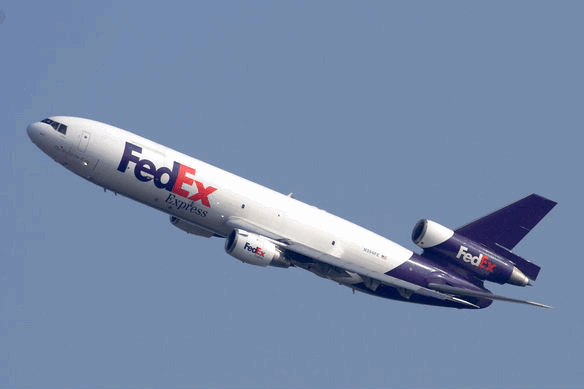FedEx Express is ready to begin installing on its Boeing MD-10s a newly certified head-up display (HUD) and infra-red vision system which will become standard cockpit equipment across the cargo carrier's entire 362-aircraft fleet by 2015.
FedEx managing director of strategic projects Joel Murdock told last week's Cargo Facts aircraft symposium in Miami the Memphis-based carrier will begin installing a new HUD with enhanced flight vision system (EFVS) technology on its MD-10 fleet by the end of September. He says when the first HUD EFVS-equipped MD-10 is placed into revenue service later this year it will mark the start of an eight-year effort, which will conclude in 2015 when the last aircraft in FedEx's fleet is slated to be equipped with the new flight safety technology.
 |
|---|
© Andy Martin/AirTeamImages.com |
FedEx in June announced it had secured FAA certification authorising the new system for the MD-10. Murdoch says the FAA has since also certificated the system for the MD-11. He notes FedEx intends to later certify the system for the Airbus A300 and A310, and Boeing 757 and 777.
Murdock says each certification effort will take about one year to complete. Once certification is achieved, it will take another two to three years to complete installations on each aircraft type.
FedEx currently operates 362 aircraft, which it uses to serve 220 countries and transport 3.5 million packages per day, says Murdock. This includes a mix of MD-11s, MD-10s, A300s, A310s as well as McDonnell Douglas DC-10s and Boeing 727s.
FedEx plans to convert its remaining DC-10s into MD-10s and has just begun replacing its 727s with 757s.
FedEx placed into service the first of 87 Singapore Technologies-converted 757 freighters in July and plans to put another three into service this month. Murdock says it was too early in the HUD-EVS programme to have the 757s outfitted with the technology during the conversion process so the fleet will instead be retrofitted early next decade.
FedEx also has 15 777 Freighters on order, which will also have to be retrofitted later with the HUD-EFVS cockpit. Murdock says the first 777 will be placed into service next September.
While enhanced and synthetic vision has already become the latest rage in the business aviation community, FedEx is poised to be the first airline in the world to use the new technology.
Murdock says the company's "magic windows programme" will allow FedEx pilots to land below normal minimums in zero visibility conditions during the day and night. This will significantly improve the reliability of FedEx's operation as it operates into several airports which are often covered by fog or haze.
"This technology sees through [fog and haze] with no problems," Murdock says. "We really feel this technology will be a big benefit for us."
Murdock says the system allows the captain to be "head up" for the entire landing while the first officer looks out of the windscreen. On the captain's HUD, infra-red images from the EFVS are displayed showing real-life conditions, including the location of terrain.
Once 50ft (15.3m) above the runway, a small cross appears on the HUD which guides the captain down for a perfect touchdown even if the first officer still cannot see the runway out of the windscreen. Guidance is even provided to allow the captain to compensate for gusty or crosswind conditions.
Source: Flight International
















